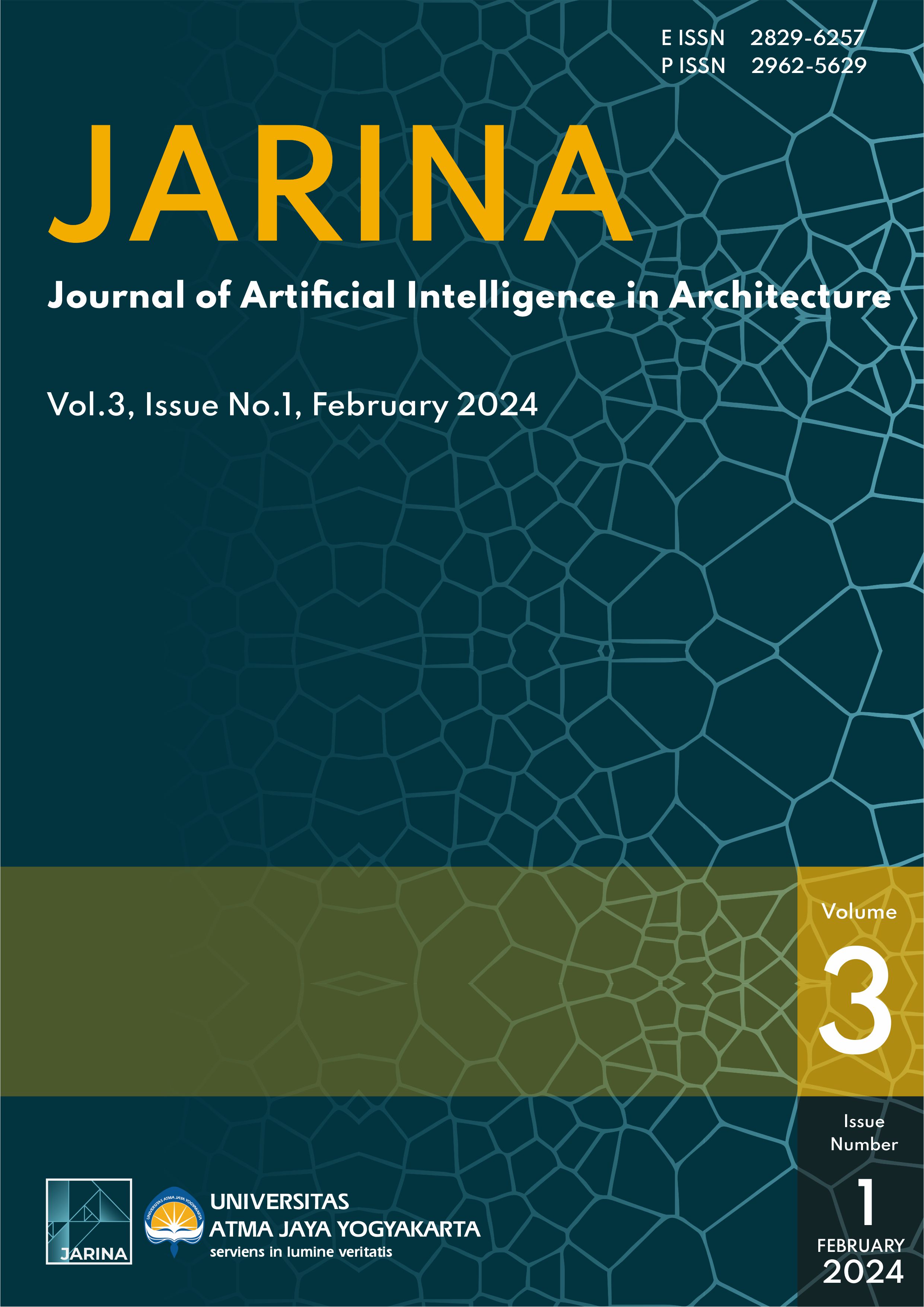Vol. 3 No. 1 (2024): Artificial Intelligence for Architectural Evolution: From Virtual Pedagogy to Biodigital Tectonics and Beyond

AI (Artificial Intelligence) gradually becomes a new normal in society. As almost everyone has internet access, AI permeates nearly all aspects of life, from suggesting hobbies to performing tasks or studies. One of the challenges in our society is the abrupt integration of AI into education. Nowadays, more students are aware of the availability of free AI tools. Students are highly tempted to utilize AI since it provides easy shortcuts to solve their class problems, often without realizing that this new method needs sufficient knowledge to be used appropriately as a learning tool. Consequently, educators and regulators can't rely on old conservative educational methods. They should constantly be updated with the latest news of AI technology to be able to quickly respond, adapt, and adjust their teaching method to prevent AI's negative impacts on students' learning process.
Artificial Intelligence (AI) integration in education has been a subject of increasing interest and research in recent years. In general, this phenomenon of AI integration has shown encouraging results in improving student performance and supporting educators with better teaching methods and materials. These developments underscore the transformative potential of AI in reshaping educational practices across various disciplines, including architecture education, in the future. Therefore, it is crucial to consider the opportunities and threats that AI presents in the context of architecture education, which hopefully will be translated into curriculum development and pedagogical approaches in Indonesia.
To discuss those challenges, this fifth release of JARINA (Journal of Artificial Intelligence in Architecture) presents five papers about the implementation of AI in architecture and education. The first author introduces Virtual Reality (VR) technology to promote active learning systems in architecture education. The second author examines the current tectonic production capability of two popular AI image-generating tools, especially in picturing organic concepts. The third author investigates the impact of Generative Artificial Intelligence (GenAI) on digital literacy development and holistic competencies in architecture education. The fourth author explores the workflow of Building Information Modelling (BIM) and Computer Aided Design (CAD) in several construction projects to highlight their effectiveness and efficiency in the design process. Finally, the fifth author identifies the role of AI and other computational methods in conducting preliminary design research to enhance architectural quality and quantity. In conclusion, integrating AI in architecture and education holds significant promise for transforming pedagogical practices, improving learning outcomes, and shaping the future of the architectural design process. However, it is mandatory to critically evaluate the development of AI along with the "readiness" state of the users to ensure ethical, inclusive, and effective educational practices.
As a result of this, we invite all researchers who put their work in the fields of digital art, informatics, neuroscience, technology in architecture, building sciences, urban design, and others to join us in JARINA. We expect all the papers presented here will inspire and enrich our readers' knowledge of architecture and digital technology. Lastly, we thank all authors and parties involved in publishing this fifth issue.
Jackobus Ade Prasetya Seputra
Editor in Chief
JARINA
Journal of Artificial Intelligence in Architecture

 Abstract views: 380 times |
Abstract views: 380 times |  Downloads: 368 times |
Downloads: 368 times |















